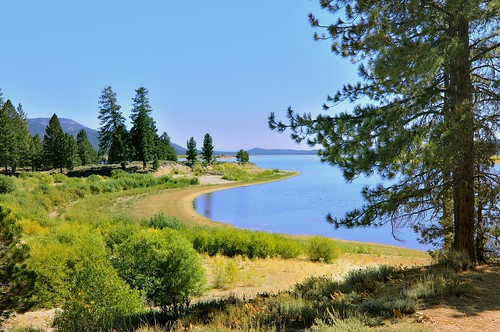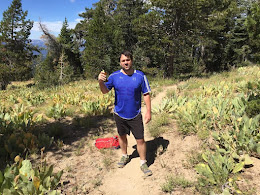UCSD spring break came and went all too fast, but at least I got to spend some time on the Central Coast. The draw to the north wasn't as strong as before since the furthest I got was the very corner of Monterey County (i.e. not to San Francisco), but look at these pictures and I bet you'll agree that it was a fine choice.
One day I went to Ventana Wilderness in Los Padres National Forest. I went for an awesome run in the southern section up toward Ventana Cone (not all the way) but next time I go think I'll have myself a little jaunt from Kirk Creek Camp up San Vicente Trail to the Cone. That should be a fun one. I wrote about the shrinking range of the redwoods in Western North America during the Holocene before, often resulting from fires. Consequently it's nice to see that the redwoods are recovering - post-fire, needles sprout everywhere, even on the main trunks, so they look fuzzy:
| From Central Coast Spring Break 2010 |
I brought some cones back to my buddy's place in Santa Barbara and sprinkled them in his yard. He just bought the place and he knows better than to plant a redwood next to his house so I told him if any of them come up to let me know and I'll move them. (So far none of mine have.)
The greenest green I have ever seen was the thousands of vertical feet of spring-grass covered ocean-facing slope descending toward the ocean. My poor iPhone couldn't capture the full sublime radiance of chlorophyll.
| From Central Coast Spring Break 2010 |
On the same trip I visited two old missions that I'd always wanted to see, San Antonio and San Miguel. The Spanish built missions a day's ride apart and most of them grew into decent-sized or even huge towns (I'm sitting in one of them now, San Diego). Somehow, it never happened for San Miguel and San Antonio de Padua. San Miguel is a town of about 1,500 on I-5 north of Paso Robles; the church is still used and still has its original interior, despite damage from the 2003 Central Coast quake. San Antonio de Padua has noxxx town around it; it was part of the land that Hearst used for their private hunting reserve, and the old presidio was the "lodge" on the eastern side of the Santa Lucias that he took guests to. When William Randolph was broke and in tax-arrears in the 30s, he made a tax forgiveness deal with the Feds, and today the area around the mission is the Hunter Liggett military base. If you visit, make sure you have government-issued photo ID, and car insurance and registration, or they won't let you on the base.
San Antonio de Padua:
| From Central Coast Spring Break 2010 |
This is what a 160-year-old grape vine looks like.
| From Central Coast Spring Break 2010 |
San Miguel:
| From Central Coast Spring Break 2010 |
I also got a nice long run in back in the Santa Ynez Valley in Los Padres above Santa Barbara, where I stayed during my little visit. I'm thankful that all this land is preserved, so close to population centers. The water you see is actually the crossing (there's a concrete slab so it's not too deep to drive across).
| From Central Coast Spring Break 2010 |
Last word: I saw what looked like a single Scotch broom plant as I was leaving Ventana, although a local naturalist tells me it was probably French broom. Either one is bad news. They're non-native plants that take over everything, destroying the local plant life. In the space of ten years, despite constant eradication efforts, I watched them take over large parts of Redwood Preserve in the East Bay Hills - so I was scared to see even one growing along Ferguson-Nacimiento Road a mile east of Highway 1, a few miles from literally the southernmost stand of redwoods on the coast that just barely made it through the Big Sur fires. I reported it by email to Los Padres online, and the naturalist I mentioned strongly encouraged me to just stop and pull the stuff out. Seriously, they're like triffids. So you can spot it and pull it out, here are pictures.







